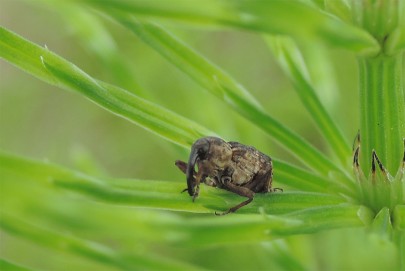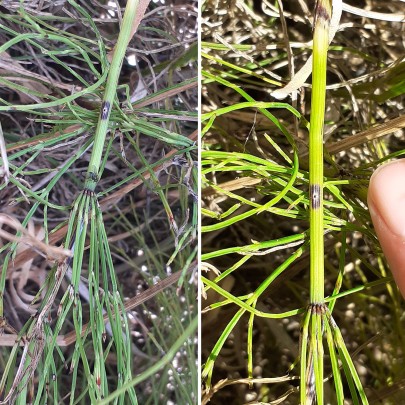It is a Numbers Game for the Field Horsetail Weevil

The field horsetail weevil
Field horsetail (Equisetum arvense) is native to Europe, Asia and North America but has naturalised in countries where it was intentionally introduced such as New Zealand, and elsewhere in the southern hemisphere. Field horsetail is a primitive, fern-like plant with a complex and extensive underground root system which can reach up to 2 meters deep. This makes it very difficult to control manually, or with herbicides, which don’t reach the lower roots and are not effective at killing the tubers.
Once the field horsetail weevil was approved for release by the Environmental Protection Authority in 2017, staff from Manaaki Whenua – Landcare Research struggled to establish a population in the field. The main issue appeared to be due to the low numbers of adults available for field releases. This prompted a change in rearing technique in 2020, which proved to be very effective. The field horsetail culturing pots were upscaled by changing to much larger tub-like containers. With more space and depth, the field horsetail plants were able to produce larger and longer stems and rhizomes which better suit the requirements of field horsetail weevil larvae which mine the stems and rhizomes.
“As a result, 2670 weevils have now been released, with over 80% of these released after rearing methods were improved,” said Paul Peterson who is leading the project. All the releases have taken place in Rangitikei which has well established and widespread populations of field horsetail, particularly on the floodplains of the lower Rangitikei River. “And at last, weevil damage has been recorded at three of the six release sites, strongly suggesting the weevils have established there, and signalling a turning point in the project,” continued Paul. After these findings, Horizons Regional Council ran a field day at the Ferryview release site in April to update the Rangitikei Horsetail Group on progress and for them to see the weevils.

Feeding damage to field horsetail by the weevil in Rangitikei
The immediate focus of the project is now on rearing more weevils for field releases in the 2021/22 summer. “Now that we have developed a highly effective rearing technique for the weevil, everyone involved agreed the sensible approach is to ensure we have well established sites before winding up the rearing work on this agent,” explained Paul. “Also, in addition to rearing more weevils, assessment plots have been set up at five of the six release sites so that the impacts of the weevil on field horsetail populations at these sites can be evaluated,” he added.
In subsequent years, the plan will be to keep a close eye on field horsetail weevil populations to assess when they will be ready for collection and redistribution to other field horsetail sites. The weevils are weak fliers, and some may not fly at all during their lives, so they will need assistance with moving to new field horsetail sites. Despite the long wait to get the first signs of establishment, the future of field horsetail biocontrol is looking a lot brighter, with weevil establishment seemingly possible when high numbers of adults are released.
Funding
This project was funded by the National Biocontrol Collective and the Ministry for Primary Industries’ Sustainable Farming Fund. Mass rearing and releases are funded by Horizons Regional Council.
Key contact

